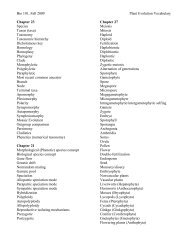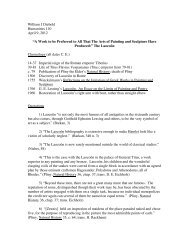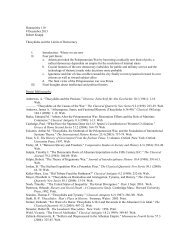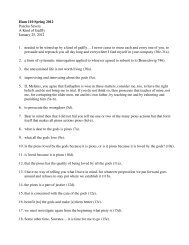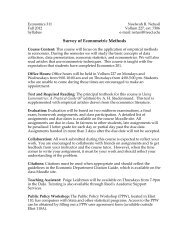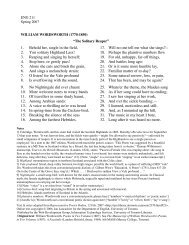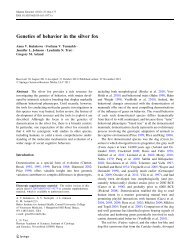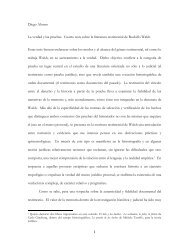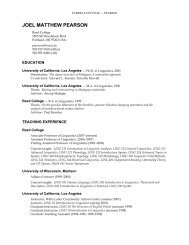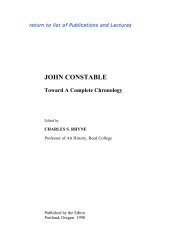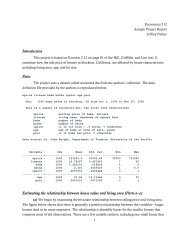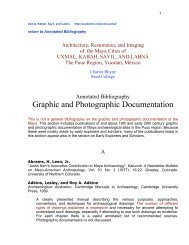REED COLLEGE SCIENCE OUTREACH PROPERTIES OF MATTER
REED COLLEGE SCIENCE OUTREACH PROPERTIES OF MATTER
REED COLLEGE SCIENCE OUTREACH PROPERTIES OF MATTER
Create successful ePaper yourself
Turn your PDF publications into a flip-book with our unique Google optimized e-Paper software.
12<br />
Materials<br />
o Molecule Building Kits<br />
Lesson Plan<br />
Review & Introduction (5–10 Minutes):<br />
Note: Remember that this lesson in only an introduction to atoms and molecules. Try to not get<br />
bogged down in the details. Just stick to the basics and be sure to leave more time for the activity<br />
than the introduction.<br />
1. Have students remind you about the different properties we have learned about so far<br />
(magnetism, states, etc.). Ask students why they think different types of matter have<br />
different properties.<br />
2. Tell students that matter is actually made up of very tiny particles called atoms. All<br />
matter is made up of these tiny particles. Put up an overhead of a periodic table. Explain<br />
that there are at least 118 different types of atoms, and each type of atom is called an<br />
element. Scientists created this table to list all the types of elements that have been<br />
discovered so far.<br />
3. Ask students if they have ever heard of the element carbon. Does anyone know what<br />
it looks like? Have student look at the graphite in their pencils, and tell them the<br />
graphite is made up of trillions of carbon atoms. Tell them that carbon (and all other<br />
atoms) has unique properties because of the way it is built.<br />
4. Show a picture of a carbon atom. Point out that it is made up of even tinier particles.<br />
Go through each part of the carbon atom, having students label the particles in their<br />
worksheets. Be sure to emphasize that the protons are the particles that give carbon<br />
(and all other atoms) its unique properties. Also point out how the periodic table tells<br />
the students how many protons each element has. To check comprehension, ask<br />
students: Do any two elements have the same number of protons?<br />
5. Finally, tell students that electrons also play an important role. Inform students that<br />
most atoms don’t like to be alone. They like to interact with other atoms. The electrons<br />
are the part of the atom that helps it to form bonds (like a friendship) with other atoms.<br />
Sometimes atoms will form bonds with the same kind of atom and sometimes atoms will<br />
form bonds with other kinds of atoms. These bonded atoms are called molecules.<br />
Molecule Modeling (35–40 Minutes):<br />
6. Ask student to open their science notebooks to the molecule-modeling activity. Tell<br />
students that today we are going to explore how atoms form bonds with each other.<br />
Tell students that we will do the first two exercises together to help them understand<br />
what to do.<br />
7. Before you pass out the kits, do the first example as a demonstration. Point out the<br />
chart that lists the elements that students will work with today. Point out how each<br />
element has its own properties. One of the properties that each element has is that they



